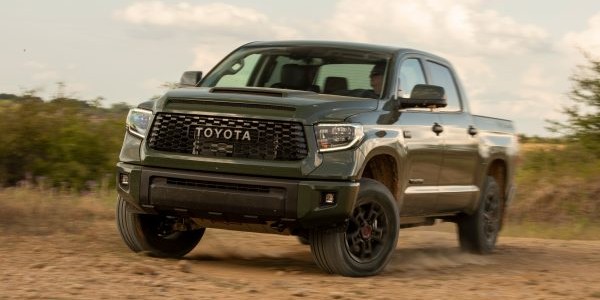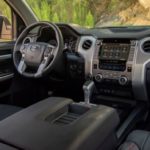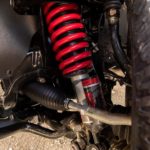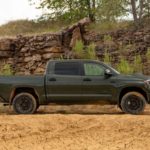By Joseph Mavilia
An Automotive Love Affair
There are many motorhomes to choose from, and I’ve looked at many over the years but have only owned two brands: Winnebago and most recently the Jayco line
Some years ago, I reviewed the Fleetwood Bounder and by and large it was a winner. Also, two colleagues on our staff reviewed the exact same coach. We were all in general agreement, in spite of the faults found, that it was a good motorhome for the day. You can read that review at this link: https://autolove.com/bounder-turbo-diesel-by-fleetwood/
If you read the review, you’ll notice my associate Price Cobb, international champion race car driver, and I did what we referred to as “Point-CounterPoint” to compare our views of the product. Ok, so it was a bit corny but was a little more lighthearted approach to debating the good and bad of this motorhome. It was also a genuine discussion from our very different professional points of view. We were also partners in newspapers owned in Colorado and Texas.
Price Cobb now lives in his home state of Texas and I am in California, and since we sold our newspapers.
I think Price would be very impressed with this Jayco Precept because in the past 20 years those nice features of the Bounder have been greatly improved.
In fact, I will preface my remarks with the overall feeling that is positive for the Jayco Precept especially from a Looks and Layout point of view.
However, that is the good news, and it was the general opinion of several other owners of the precept model that I met while traveling to several parks around Southern California in the first year of my ownership.
Those meetings were an encouragement that I had made a good choice of products for my new home away from home.
Then reality set in and although the list of warranty repairs needed was long and mostly minor stuff the process was good. The dealer fixed all problems and were a great representation of the Jayco product. That dealer warrants mentioning. I purchased the coach at All Valley RV in Acton CA.
So as I ventured out into the RV world I returned from each outing for a now routine visit to the dealer to fix yet another problem.
Here is a list of major items and later we’ll look at some of the minor stuff.
- The floor bubbled and is currently awaiting repair. It appears the floors are not glued down for California consumption. But for sales in Canada the floor is glued so my problem isn’t a problem in Canada. So that is more of a critique of California government overregulation and a pain for Jayco coachbuilders.
- The windshield popped out of place from the mounting. I believe it is a design deficiency primarily because of the roads we all must drive on. Although experience has been on California roads it is the same or worse in many other states where potholes present a jostling of the coach that may have been the reason for the windshield popping out. Here is a photo we took at a Safelight glass repair facility. They advised it must be a tweaking of the windshield supports that is the cause of the problem. The dealer is still trying to find a repair solution
- This coach is powered by a Ford Triton V10 engine and drivetrain and curiously there are very few dealers who will do routine service and maintenance and thus anything else that may need repair. I live in the Antelope Valley of California and the nearest Ford dealer who will service my vehicle is Jim Burke Ford – 111 miles away in Bakersfield CA.
These are major issues and to me that is nuts to have these issues in a new motorhome. What’s worse Jayco has been of no help in supporting me. I have asked for a list of Ford dealers for example and have received nothing. I’m sure you are thinking what I was thinking when I asked, “you mean you don’t have a list of dealers who service your product”?
So, I wrote a letter to the president and CEO of the company and to date crickets. I have heard nothing back and wonder about their support. I’ll have to give you a follow up report on how this all turned out.
In the meantime, let’s talk about a few of the conveniences and inconveniences:
Handling & Performance:
Handling couldn’t be better in my humble opinion. I am not a bus or truck driver, but I find handling and performance very acceptable. The Ford Triton V10 is very good although I’m not a Ford fan I’m ok with how it pulls this 22,000-pound coach
It does struggle a bit going up steep grades but generally it is very good and intuitive when you leave it in drive mode. It works as well as me trying to change gears to suit the situation.
Styling:
Beautiful simply beautiful presentation and layout. I can’t complain.
Fit and Finish:
I can however report that quality control needs improvement as several small things gave me concern as to what else is being overlooked? Yes, I can live with the small things, but I don’t want major issues that are more than annoying.
- The sink faucet hose was hanging up and had to be repaired.
- The fatsia fell off over the kitchen table and had to be repaired. Design is at fault.
- Some of the trim came loose and the back splash over the stove and sink was not properly glued.
- A fitting for the propane connection to the barbeque exited from the tank into a wall so it was near impossible to connect the hose. Clearly that was not well thought out.
- The water hose connector fitting did not work properly, and a part is on order.
These and several little things are to be expected even though they could have been avoided in manufacture. Quality control is lacking since these things were not checked out before delivery.
Cost:
When I consider the cost of the automobiles, trucks and vans I have tested and reviewed during my career I have to admit cost to value must be considered. Cars and truck prices can range from $30 to $100,000 so it is hard to complain about a complete home away from home like this Precept selling for under $150,000.
Conveniences and comfort:
All the conveniences of home – simply on a marvelously smaller platform.
Consumer Recommendations:
Trust but verify was a famous quote from President Ronald Reagan. Very true and you simply cannot take the seller’s word. You must verify and clarify your mutual understanding between you and the seller.
I chose to take their advice to get an extended warranty for another five years and that was a good decision. However, I left the closing with the finance department without having a clear understanding. More likely it was my failing to understand, so I recommend you have them explain everything two or three times or until you are clear of who is responsible for what. Where would service be done on the drive train and where would other warranty work be done?
The jury is still out on performance. Stay tuned for more developments on owning this Jayco precept 31 UL
Recognized Competition:
Gas Stats:
It uses regular gasoline and has been getting about 10-11 mpg
$3.05 / Gal avg. November 2020
Pricing:
MSRP $125,000.


































